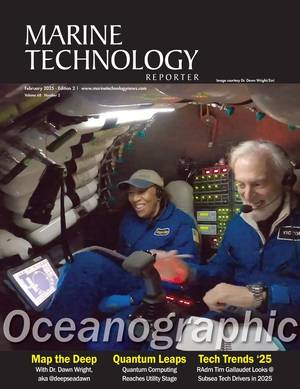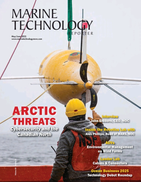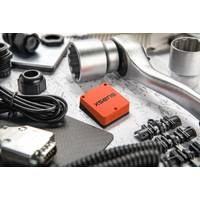
Xsens Announces New OEM Inertial Measurement Unit
generation product. Heading accuracy is 1° RMS and roll and pitch accuracy is 0.2° RMS. Stability is also enhanced in the Xsens Avior: in-run bias stability in the gyroscope is 8°/hr, and accelerometer in-run bias stability is 15μg.Weighing 35.2g, the Xsens Avior is enclosed in a robust aluminum housing and has a rating of IP51 and an operating temperature range of -40°C to 85°C. The sensor’s small size, light weight, high performance and robust construction provide outstanding value in applications such as:Camera/payload stabilization, including SOTM (SATCOM-on-the-Move)
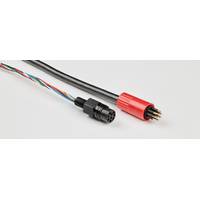
MacArtney Introduces 9-Contact SubConn Connector
layer of data protection and ensuring reliable performance.The SubConn Micro Circular connector series provides dependable performance even at great ocean depths. High-quality materials such as chloroprene rubber for the connector body and options including brass, stainless steel, titanium, anodized aluminum or PEEK for the bulkhead body resist corrosion and pressure to ensure long-term durability and reliability.Each of the nine contacts is rated at 5 A, with a maximum of 20 A per connector, meeting the demanding requirements of underwater applications. The Micro Circular connectors are manufactured
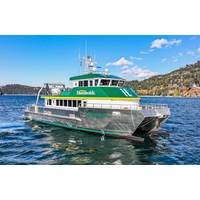
All American Marine Delivers Cal Poly Humboldt Catamaran
All American Marine (AAM) has delivered a 78’ x 26.7’ semi-displacement aluminum catamaran to Cal Poly Humboldt. The vessel will serve as a scientific exploration platform and support faculty research along the Northern California and Oregon coasts.Designed by Nic de Waal of Teknicraft Design, the RV North Wind builds on the proven success of similar research vessels, including the R/V Shackleford and the University of Hawaii’s R/V Imua.Constructed to US Coast Guard Subchapter T standards, it is optimized for near-coastal and offshore operations, supporting Cal Poly Humboldt&rsqu
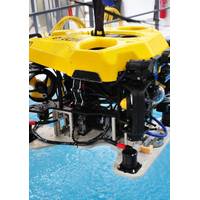
Exail Enhances ROVs with Electromagnetic Sensing Tech
environments, including turbid waters”, explained Gary Bagot, Sales Director at Elwave. The R7 ROVs equipped with Elwave‘s Tetrapulse sensors will improve the detection, localization, and characterization of both metallic and non- metallic underwater and buried targets, including steel, aluminum, and fiberglass composites.The R7 ROV: A compact and versatile solution for underwater operations combining the agility of a mini-ROV with the capabilities of an observation-class system, the R7’s modular design supports a range of sensors, tools, and payloads. This versatility makes it particularl
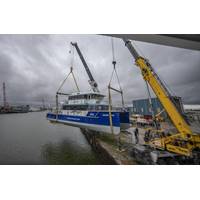
New Vessel Launched for Lake Superior Research Institute
Harvey, La. shipbuilder Midship Marine has launched a new low-emission battery hybrid research vessel for the Lake Superior Research Institute (LSRI) at the University of Wisconsin-Superior.Described as a "floating classroom", the 65-foot aluminum catamaran Sadie Ann has been will support the university’s on-water education and research in the the icy waters of Lake SuperiorThe Incat-Crowther-designed vessel is 24-feet wide with a maximum capacity of 49 passengers and eight crew. A reinforced hull will allow operation in light winter conditions and the 4.6-foot draft will be operable
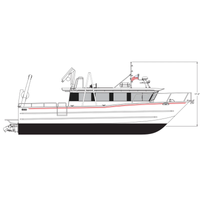
BRIX Marine Building Research Vessel for Long Island Sound Study
Port Angeles, Wash. aluminum boatbuilder BRIX Marine announced it will build a new catamaran research vessel designed for year-round environmental research along Connecticut’s coast. Commissioned by the Long Island Sound Study (LISS), the vessel will play a key role in marine and water quality research, expanding on the work of the RV John Dempsey, which has been active in the area since 1990.Built for the Connecticut Department of Energy and Environmental Protection (CT DEEP), the new vessel will gather critical data to support efforts in understanding and protecting Long Island Sound’s
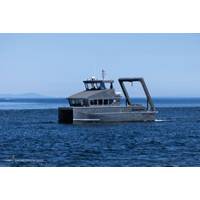
US National Lab Takes Delivery of First Hybrid Research Vessel
research vessel designed by Incat Crowther and built by Snow & Company in Seattle, has been delivered to the U.S. Department of Energy’s Pacific Northwest National Laboratory (PNNL).RV Resilience is the Department of Energy’s first hybrid electric-diesel research vessel. The 15-meter aluminum catamaran will help PNNL sustainably expand its research activities in the Sequim Bay region of Washington state.RV Resilience’s 28 m2 main deck is equipped with an A-Frame, boom crane and movable davit in addition to a foldable swim platform. Designed to support the work of six scientists

University of North Carolina Wilmington Orders Research Vessel from All American Marine
(UNCW). The vessel will operate as a multipurpose research platform capable of conducting a wide range of scientific missions, including oceanographic surveys, biological studies and educational outreach programs along the Mid-Atlantic, U.S. East Coast and offshore waters.The 73’ x 26.7’ aluminum catamaran, designed by Teknicraft Design in Auckland, New Zealand, incorporates a hydrofoil-assisted hull, ensuring reduced drag, enhanced fuel efficiency and passenger comfort. This dynamic hull design is optimized for stability and performance in various sea conditions. The vessel is designed
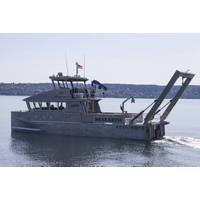
Snow & Company Delivers Hybrid Research Vessel Resilience to PNNL
Seattle shipbuilder Snow & Company announced it has delivered the newly built plug-in hybrid research vessel Resilience for the Pacific Northwest National Laboratory.The first and only hybrid vessel in the Department of Energy's (DOE) fleet, the 50-foot aluminum catamaran was designed by Incat Crowther with propulsion integration provided by Pacific Power. Hybrid propulsion is accomplished by joining twin Volvo Penta marine engines, and two Danfoss motor-generators. Power is stored using a Spear Trident battery system.The power and propulsion setup allows the vessel to operate in a zero-emission
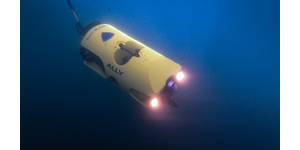
 February 2025
February 2025
